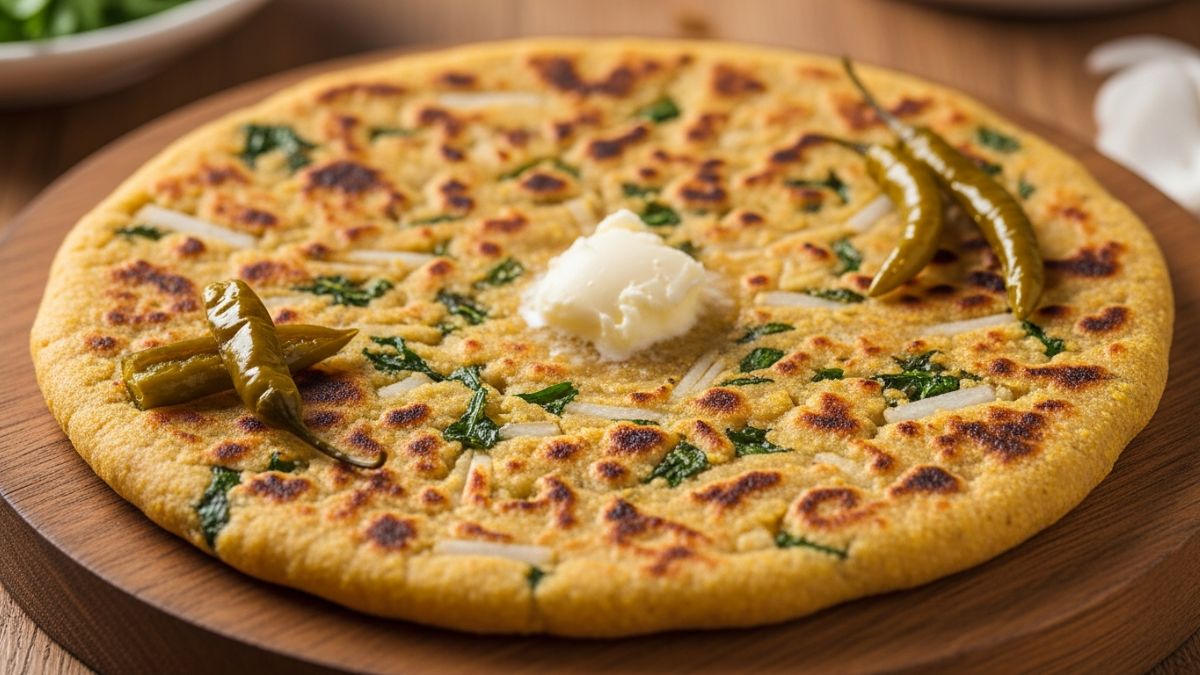Do you remember the first time you experienced an ulcer in your mouth? If it was during your school days, there's a good chance it might have surfaced when that big final exam was around the corner. That's the time when Manathakkali Keerai or Kaake (or Kaaki) soppu was usually prepared at my house. My mother was a big believer in the curative properties of this seasonal spinach varietal, packed with nutrients. Spinach remains a big part of my weekly diet, and Manathakkali Keerai (the Tamil name for Black Nightshade) is one of my 'go-to' greens.
Makoi in Hindi, Kaake (or Kaaki) soppu in Kannada - these are the many names across India for what is also referred to as Black Nightshade or Solanum Nigrum (its botanical name). It's also widely known as wonderberry. That refers to the Manathakkali or the small dark berry that is consumed in its ripe, berry form and is also sundried and used in gravies (or kuzhambu) when the berry is not in season. They don't have a strong flavour profile but are loaded with health benefits. It's the same for the leaves of the plant or the keerai or soppu (the Kannada word for spinach).
Also Read: Eye Health: Berries May Help Improve Vision - 3 Ways To Include Berries In Your Diet

The berry is an absolute elixir.
Photo Credit: Image Credit: iStock
Back in the day when multivitamins were not part of daily diets, most of our previous generations looked for nutrients in everyday food and ensured they were integrated into our menus. Manathakkali Keerai is a rich source of iron, vitamins, and minerals. These minerals include niacin, calcium, phosphorus, riboflavin, and iron. It is also a high source of vitamin C. It's not just a great antidote for ulcers; it's also used as a cure for digestive problems and skin ailments.
Growing up, I remember a simple mashed spinach recipe with coconut that was how Manathakali recipe was usually cooked at home. The other common preparation is a dal with this spinach that's also known as a keerai (spinach) masiyal or mash. This spinach is back on the radar with quite a few nutritionists and dietitians recommending it for multiple ailments and overall wellness. That's one reason we are also seeing this spinach playing out in non-traditional recipes like soups. You can try these simple recipes at home that are packed with the goodness of this wonder spinach.
Also Read: Spinach Recipes: Try These South Indian Recipes That Include The Goodness Of Spinach

This plant has proven to have several health benefits.
Photo Credit: Image Credit: iStock
Manathakkali Keerai Poriyal Recipe:
Ingredients:
- 1 bunch Manathakkali Keerai (Cleaned and chopped)
- 2 Dry Red Chilies
- 1 tbsp Chana Dal
- 1 tbsp Urad Dal
- 1/4 Cup Shredded Coconut
- 10 Shallots (finely sliced)
- 1 tsp Mustard Seeds
- 2 tbsp Oil (Coconut oil works best)
- 1/2 tsp asafetida
- Salt as required
Method:
- Temper mustard seeds (and then the dals) with the oil
- Add onion, asafoetida, salt, and red chillies once the dals turn golden brown
- Saute till the onion turns light brown.
- Add the chopped spinach and turn the flame to medium.
- Cook till it turns tender (Don't overcook). Once cooked add shredded coconut.
- Mix well & saute for a couple of minutes before you serve with rice and sambar or rasam.
Recipe - Manathakkali Keerai Soup
Ingredients:
- 1 bunch of Manathakkali Keerai (Cleaned and chopped)
- 10-15 Shallots (sliced)
- 5 Garlic cloves (crushed)
- 1 tbsp each of Cumin and pepper (coarsely ground)
- 1 Medium-sized Tomato (chopped)
- 2 tbsp Coconut Oil
- 1 tsp Turmeric powder
- Salt as required.
Method:
- Sauté crushed garlic and shallots for a couple of minutes in a pan with the coconut oil
- Add the cumin and pepper with chopped tomatoes and spinach and saute for a couple of minutes
- Add three cups of water, stir well and bring to a boil.
- Let it simmer for about 10 minutes over medium flame.
- Filter the cooked broth and the spinach-tomato mixture. Keep it separately
- Transfer the broth to a different pan; boil on a low flame.
- Transfer the leftover mixture to a mixer; blend it into a smooth paste.
- Add this to the broth and cook for 5 minutes on a medium flame.
- Serve hot with crushed pepper.
About Ashwin RajagopalanI am the proverbial slashie - a content architect, writer, speaker and cultural intelligence coach. School lunch boxes are usually the beginning of our culinary discoveries.That curiosity hasn’t waned. It’s only got stronger as I’ve explored culinary cultures, street food and fine dining restaurants across the world. I’ve discovered cultures and destinations through culinary motifs. I am equally passionate about writing on consumer tech and travel.











